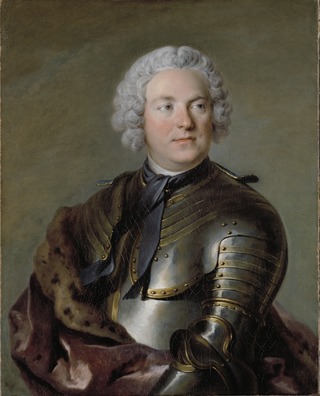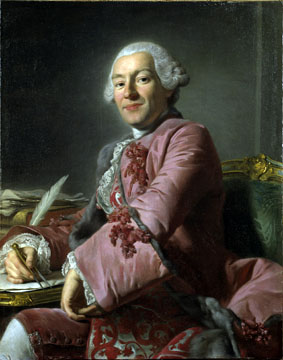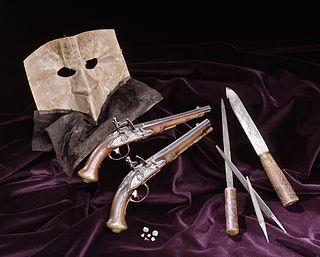Related Research Articles

Gustav IV Adolf or Gustav IV Adolph was King of Sweden from 1792 until he was deposed in a coup in 1809. He was also the last Swedish monarch to be the ruler of Finland.

The monarchy of Sweden is centered on the monarchical head of state of Sweden, by law a constitutional and hereditary monarchy and with a parliamentary system. There have been kings in what now is the Kingdom of Sweden for more than a millennium. Originally an elective monarchy, it became a hereditary monarchy in the 16th century during the reign of Gustav Vasa, though virtually all monarchs before that belonged to a limited and small number of families which are considered to be the royal dynasties of Sweden.

The Council of the Realm, or simply The Council, was a cabinet of medieval origin, consisting of magnates which advised, and at times co-ruled with, the King of Sweden.

Carl Gustaf Nordin was a Swedish statesman, historian and ecclesiastic.

The history of Sweden from 1772 to 1809 is better known as the Gustavian era of Kings Gustav III and Gustav IV, as well as the reign of King Charles XIII of Sweden.

Louisa Ulrika of Prussia was Queen of Sweden from 1751 to 1771 as the wife of King Adolf Frederick. She was queen mother during the reign of King Gustav III.

Count Carl Gustaf Tessin was a Swedish Count and politician and son of architect Nicodemus Tessin the Younger and Hedvig Eleonora Stenbock. He was one of the most brilliant personages of his day, and the most prominent representative of French culture in Sweden. He was also a fine orator.

Countess Christina Augusta Löwenhielm, was a Swedish noblewoman and courtier. She is known for her love affair with the later Charles XIII of Sweden. She is also famous in history as one of "the three graces" of the Gustavian age; three ladies-in-waiting immortalized in the poem Gracernas döpelse by Johan Henric Kellgren, and known profiles of the epoch.

Carl Stenborg was a Swedish opera singer, composer and theatre director. He belonged to the pioneer generation of the Royal Swedish Opera and was regarded as one of the leading opera singers of the Gustavian era. He was a hovsångare and a member of the Royal Swedish Academy of Music.

Gustav III, also called Gustavus III, was King of Sweden from 1771 until his assassination in 1792. He was the eldest son of King Adolf Frederick and Queen Louisa Ulrika of Sweden.

Carl Fredrik Adelcrantz was a Swedish architect and civil servant. Adelcrantz's style developed from a rococo influenced by Carl Hårleman, the leading architect in Sweden in the early years of his career, to a classical idiom influenced by the stylistic developments in France in the mid-to-late 18th century. As överintendent, he headed the royal and public building works from 1767 until his retirement in 1795.

Events from the year 1772 in Sweden

Events from the year 1789 in Sweden

Events from the year 1790 in Sweden

Events from the year 1792 in Sweden

Events from the year 1785 in Sweden

Events from the year 1756 in Sweden

Events from the year 1783 in Sweden

Events from the year 1731 in Sweden
Events from the year 1957 in Sweden
References
- ↑ Lennart Sundström (5 November 2013). "Föreningen Gamla Östersund" (in Swedish). Länstidningen Östersund. Archived from the original on 10 September 2018. Retrieved 7 April 2021.
- ↑ Flodmark, Johan: Stenborgska skådebanorna. Bidrag till Stockholms teaterhistoria. Stockholm. Norstedt & söner.